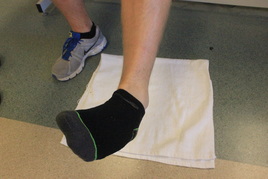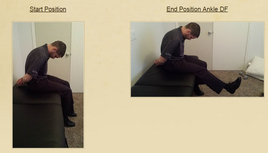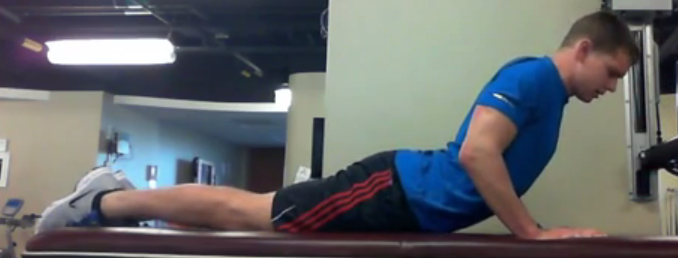- Home
- About Us
- TSPT Academy
- Online Courses
-
Resources
- Newsletter
- Business Minded Sports Physio Podcast
- Day in the Life of a Sports PT
- Residency Corner
-
Special Tests
>
-
Cervical Spine
>
- Alar Ligament Test
- Bakody's Sign
- Cervical Distraction Test
- Cervical Rotation Lateral Flexion Test
- Craniocervical Flexion Test (CCFT)
- Deep Neck Flexor Endurance Test
- Posterior-Anterior Segmental Mobility
- Segmental Mobility
- Sharp-Purser Test
- Spurling's Maneuver
- Transverse Ligament Test
- ULNT - Median
- ULNT - Radial
- ULNT - Ulnar
- Vertebral Artery Test
- Thoracic Spine >
-
Lumbar Spine/Sacroiliac Joint
>
- Active Sit-Up Test
- Alternate Gillet Test
- Crossed Straight Leg Raise Test
- Extensor Endurance Test
- FABER Test
- Fortin's Sign
- Gaenslen Test
- Gillet Test
- Gower's Sign
- Lumbar Quadrant Test
- POSH Test
- Posteroanterior Mobility
- Prone Knee Bend Test
- Prone Instability Test
- Resisted Abduction Test
- Sacral Clearing Test
- Seated Forward Flexion Test
- SIJ Compression/Distraction Test
- Slump Test
- Sphinx Test
- Spine Rotators & Multifidus Test
- Squish Test
- Standing Forward Flexion Test
- Straight Leg Raise Test
- Supine to Long Sit Test
-
Shoulder
>
- Active Compression Test
- Anterior Apprehension
- Biceps Load Test II
- Drop Arm Sign
- External Rotation Lag Sign
- Hawkins-Kennedy Impingement Sign
- Horizontal Adduction Test
- Internal Rotation Lag Sign
- Jobe Test
- Ludington's Test
- Neer Test
- Painful Arc Sign
- Pronated Load Test
- Resisted Supination External Rotation Test
- Speed's Test
- Posterior Apprehension
- Sulcus Sign
- Thoracic Outlet Tests >
- Yergason's Test
- Elbow >
- Wrist/Hand >
- Hip >
- Knee >
- Foot/Ankle >
-
Cervical Spine
>
- I want Financial Freedom
- I want Professional Growth
- I want Clinical Mastery
 A few months back I wrote a differential diagnosis POST discussing the intermediate dorsal cutaneous nerve vs. ATFL sprain. Last week I was working with a gentleman 4 weeks post inversion ankle sprain. The patient's subjective report: "My strength and ROM have significantly improved. I have minimal pain except a burning sensation on the top of my outer three toes." The burning sensation was increased with palpation and single leg weight bearing. A common peroneal nerve stress test (SLUMP test while biasing the foot and ankle in PF/IN) revealed reproduction of the patient's symptoms. The symptoms met the 3 criteria for positive neural tension: 1. side to side difference 2. reproduction of the patient's symptoms 3. changes with a distant component. How do you treat peripheral nerve tension? The keys to treating nerve tension are: 1. Mobilization/manipulation of the joints which the nerve passes 2. Nerve gliding/sliding exercises 3. Soft tissue mobilization 4. Light endurance exercises. 5. Education My daily treatment to give you an idea how to treat common peroneal nerve tension: First, I manipulated the mid-thoracic spine to mobilize the sympathetic nervous system. Then I reassessed the asterisk sign. Symptoms improved (SLUMP test with PF/IN bias), but were not abolished. Next, I manipulated L4-L5 to further mobilize the common peroneal nerve. Reassessing the asterisk sign completely relieved the patient's symptoms. Third, I addressed talocrural joint mobility since the joint was hypomobilie and affecting the ability to heel to toe strike Fourth, I performed endurance and corrective exercises, I had the patient perform 15 minutes on the stationary bike, followed by two ankle mobility exercises, calf raises, and gait training on the treadmill promoting heel to toe progression and toe off. Would you have done anything differently? Jim Like this post? Check out others from TSPT or our INSIDER ACCESS PAGE!
4 Comments
4/29/2015 12:53:36 pm
Jim, really good treatment program. Something that I have been embracing and using lately with good results is the whole pain science approach. No matter what tissue is being snagged, irritated, stretching, etc causing nociceptive bombardment of the thalamus, the brain has the ultimate job as the "motherboard of the nervous system" as I call it to determine if something is threatening enough to cause pain. After using analogies to explain how pain is really equated to this "sensitive alarm system" I explain that exercise, neuro dynamics, manips, soft tissue, Etc all help to reduce the sensitivity but pain science education and its effects to empower the patient is the foundation of it all. Did you go into that a great deal with this guy? Do you discuss the current pain science literature with most of your patients. I didn't use to.. I'm a recovering biomechanist as they say, but I have seen ridiculous results and significant pain reduction just by sitting down and brewing someone a cup of coffee on visit 2 and hammering out pain education than any other thing I used to do in the past.. I didn't see a prescriptive neuro dynamics exercise given.. Did you give him one? Which one do you like? Slump position like your concordant sign and use distal joint movements to do the neuro dynamic or more a unloaded SLR type position?
Reply
Jim
5/10/2015 09:20:27 am
Steve,
Reply
Kate Phillips
3/25/2023 12:12:10 pm
Hi Jim,
Reply
10/20/2023 02:49:51 am
Common Peroneal Nerve Tension refers to the condition where the peroneal nerve, a major nerve in the leg, experiences increased pressure or stretching, leading to discomfort and potential complications. This issue can result from various factors such as injury, compression, or underlying health conditions. Individuals experiencing symptoms like numbness, tingling, or weakness in the lower leg and foot should seek medical attention promptly. Understanding the causes and symptoms is crucial for timely diagnosis and effective management. To learn more about this topic, you can visit https://magicalkatrina.com/magiciansblog/o5rgbeo0c2j8evxet1yv5wksir8jzz for valuable insights and information.
Reply
Leave a Reply. |
Dr. Brian Schwabe's NEW Book in partner with PaleoHacks!
Learn residency-level content on our
Insider Access pages We value quality PT education & CEU's. Click the MedBridge logo below for TSPT savings!Archives
July 2019
Categories
All
|








 RSS Feed
RSS Feed